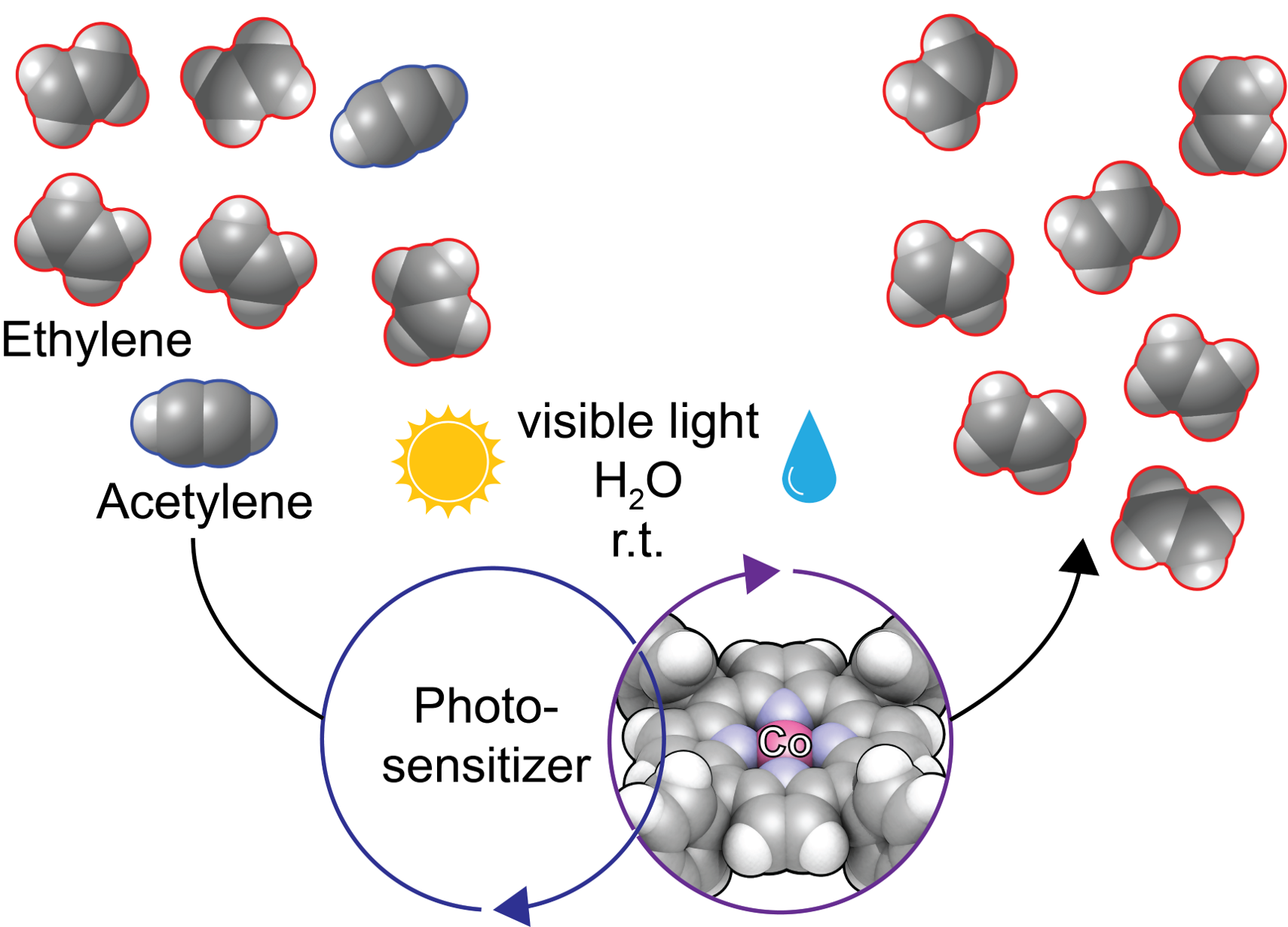A Greener, Photochemical, Route to Polymer-grade Ethylene
June 13, 2022
Scientific Achievement
A visible light-powered cobalt porphyrin catalyzes near 100% conversion of acetylene to ethylene with >99% selectivity.

Selective photoreduction of acetylene to ethylene powered by visible light and water at room temperature using molecular or semiconductor photosensitizers and cobalt molecular catalyst.
Significance and Impact
We report a photocatalytic system to reduce acetylene to ethylene with >99% selectivity for ethylene under both non-competitive (no ethylene co-feed) and competitive (ethylene co-feed) conditions, and near 100% conversion under the latter industrially relevant condition.
Research Details
- A new photocatalytic system that operates in water to selectively reduce acetylene to ethylene at room temperature.
- The water-soluble cobalt porphyrin catalyst was found to be photosensitized either by Ru(bpy)32+ or inexpensive organic semiconductor carbon nitride under visible light irradiation
- Experiments performed in D2O proved proved unambiguously that acetylene is the precursor and that the protons added to make C2H4 originate from the water solvent.
Arcudi, F.;‡ Ðorđević, L.; ‡ Schweitzer, N.; Stupp, S.; Weiss, E. A.
Nature Chemistry, 2022, in press
Work Performed at Northwestern University
